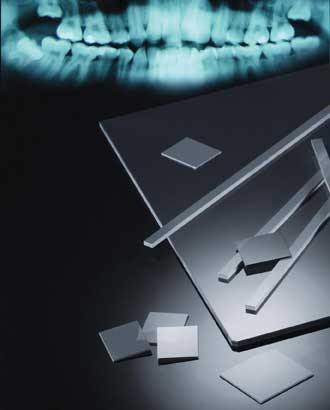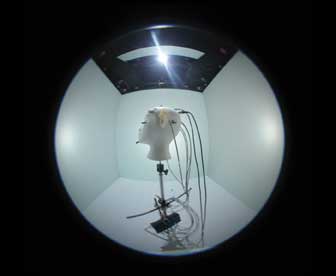A Q&A with fiber companies reveals continuing advances in medical applications.
Fiber optics allow medical devices to direct light to hard-to-reach areas for diagnostics and treatment – that’s hardly news. The first glass rod device for use as a surgical lamp was patented in 1898. But that doesn’t mean that the field isn’t growing: As new imaging and therapeutic methods are born, and as “smaller, cheaper, less invasive” remains the mantra of the biomedical industry, fiber continues to expand in the market.
To get a firsthand look at that market, Photonics Spectra spoke with representatives of several companies:
• Kevin Bakhshpour, VP of sales and marketing at CeramOptec in East Longmeadow, Mass. The company makes specialty multimode fibers, assemblies and bundles, including custom designs for various medical applications. “Because we produce our own preforms and fibers, we can vary the fiber specifications (core, core:clad ratio, numerical aperture) to meet the specific needs of the application. We produce fiber assemblies and bundles to the designers’ requirements. We have almost no limits as to number of fibers, end design, length.”
• Scott Farland, director of business development at Incom Inc. in Charlton, Mass., which makes fiber optic faceplates. “When coupled with CMOS sensors for digital radiography, [they] provide better images, reduced radiation exposure to sensors and lower operating costs.”

Fiber optic products such as these thin faceplates can be used with medical x-ray systems.
• Rob Morris, marketing operations manager at Ocean Optics in Dunedin, Fla. “We provide miniature fiber optic spectrometers and fiber optical chemical sensors that are used in research and development, medical diagnostics and point-of-care analysis.”
• Jean-Michel Pelaprat, CEO of Vytran in Morganville, N.J. The company produces capital equipment “that can be used to develop – and produce in high volume – fiber terminations and fiber assemblies (fiber probes, fiber deliveries, fiber lenses, image guides) for imaging (such as OCT) and fiber deliveries for therapeutic applications.”
Q: What do you see as the “next big thing” in fiber optics for medical devices in general?
Pelaprat: We believe that the manufacturing cost of these medical devices is dramatically reduced as a result of high-volume manufacturing techniques and, thus, manufacturing volumes will go from tens of thousands to millions.

An Ocean Optics contest winner creates “virtual” environments to study how people react to physical,
visual and auditory cues in the environment, using the spectrometer to measure color and lighting. Practical applications include designing housing and other environments that are safer and more pleasant for the elderly.
Farland: Incom is in the process of developing a capillary-based x-ray antiscatter grid that has the chance to be one of the most disruptive technologies in digital radiography in years. Also, “full chest” area CMOS-based x-ray detectors require the largest fiber optic faceplate ever created (up to 43 x 43 cm).
Morris: As with most technology, the desire to make systems and devices that are smaller, faster and more economical is a significant driver. In spectroscopy, there is growing interest in Raman, NIR and other techniques – especially as they become more accessible – as a complement to (or, in some cases, replacement for) more involved methods of analysis.
Bakhshpour: Not sure that there is one “next big thing” – there is constant advancement in the field. We are seeing advancement in the diagnostic side of the medical field as well as new designs for treatment that are less intrusive.
Q: Are you seeing any new and exciting advances coming out of R&D and/or university labs?
Morris: The advances come so quickly, it can be hard to keep up. We’ve had customers involved in all sorts of interesting diagnostics research, from point-of-care blood monitoring to noninvasive cancer detection.
One of the more interesting applications of recent vintage has to do with a sensor that a person could use to test if the alcoholic drink they ordered at the bar or restaurant had been doped with a narcotic or other harmful substance.
Farland: Incom is currently collaborating with several universities and national labs to develop next-generation PET detectors by combining microchannel plate and traditional photomultiplier tube technology.
Pelaprat: Recent developments enable very high imaging accuracy and quality. The new devices will soon percolate into manufacturing.
Bakhshpour: There are some great advances and ideas, but most are covered by nondisclosure agreements!
Q: How would you say the market has been in the past few years for fiber optics for medical devices?
Pelaprat: I would characterize it as important regarding development. This, combined with several FDA approvals, has resulted in a migration into first-level volume manufacturing. While it remains in early stage, there is a tremendous amount of resources spent in R&D. We have also seen some level of consolidation of startups with large medical device public corporations.
Bakhshpour: We have a large number of projects in medical and life science applications where the fiber is used as a piece of the diagnostic or therapeutic component of the system.
Farland: Traditional medical x-ray technology is being replaced by CMOS-based detectors (enabled by Incom’s fiber optic faceplates). Sales of these systems [have] been increasingly strong in the past 18 months, with a very strong forecast over the next several years as market adaptation continues to grow.
Morris: The market has been very robust. Although we don’t sell medical devices, we sell optoelectronic sensing components to customers who integrate those components into their own devices. This OEM business has been successful, in large part because the inherent properties of fiber optics technology make it attractive for noninvasive analysis.
Q: Where do you think the market is going?
Farland: Fiber optics-based CMOS detectors.
Pelaprat: It can only continue to grow. While it is in [its] infancy today, the combination of engineering creativity with the manufacturing techniques that are now available make it poised to grow.
Bakhshpour: The breadth of inquiries for products for medical applications seems to expand each year. Fields such as general surgery, urology, ophthalmology continue to expand their product lines as well as diode laser delivery systems. Life sciences and spectroscopy continue to grow and advance.
Morris: The market is only going to get bigger. New technologies will inspire applications we can’t even imagine right now, and new diagnostic challenges will drive the market to continue to innovate. Also, I believe you’ll see much more specificity in diagnostics sensing as fiber optic systems evolve.
Q: Which application areas would you say are thriving – and why?
Pelaprat: OCT. There is a big demand, and many patients to treat.
Farland: All digital radiography applications are moving rapidly toward this universal platform.
Bakhshpour: Laser delivery for medical applications continues to increase. It’s a less-invasive treatment for the patient in most cases.
Morris: Laser-based applications such as Raman certainly have shown a surge of interest. Raman is a very useful technique for chemical analysis, especially because of the strong specificity of the Raman signature of many samples.
In addition, Raman analysis is nondestructive, requires very limited sample preparation and allows for sample volumes in the microliter range. For applications where C-OH structural information is important, for example, 532-nm Raman is typical. Such measurements are common in biological and pharmaceutical sample analysis.
Q: What are the biggest challenges to new advances in fiber optics for medical devices?
Pelaprat: Not sure. This is a question for the medical device companies.
Farland: As the technology is moving incredibly fast, Incom is forced to continue to innovate and improve upon our technology while simultaneously meeting increased volume demands.
Bakhshpour: It is costly and time-consuming to receive approval on new medical devices.
Morris: Regulatory hurdles are certainly one challenge, especially as the regulators struggle to keep up with the pace of development. Another challenge is being able to keep instrument production costs reasonable even as the level of device sophistication increases.